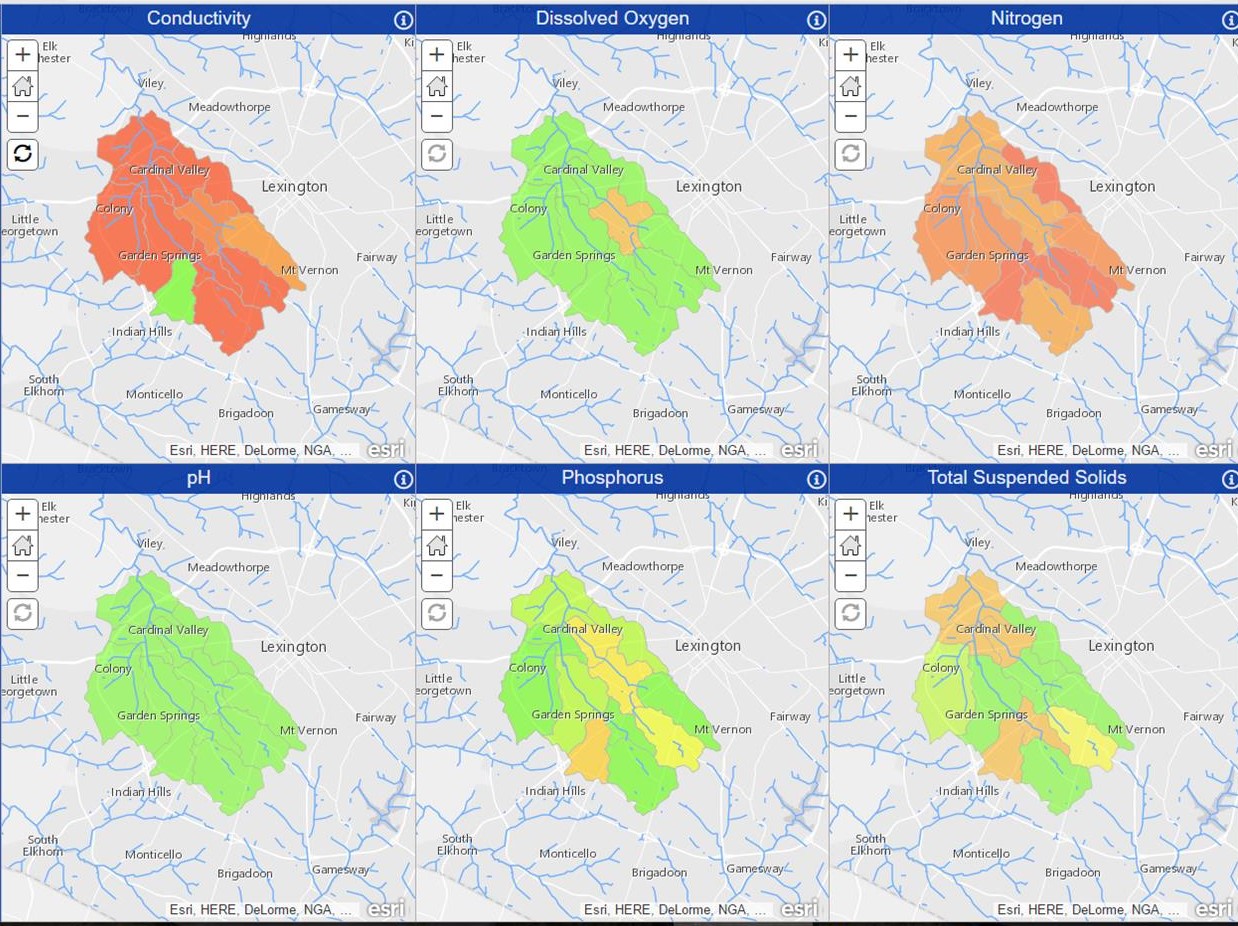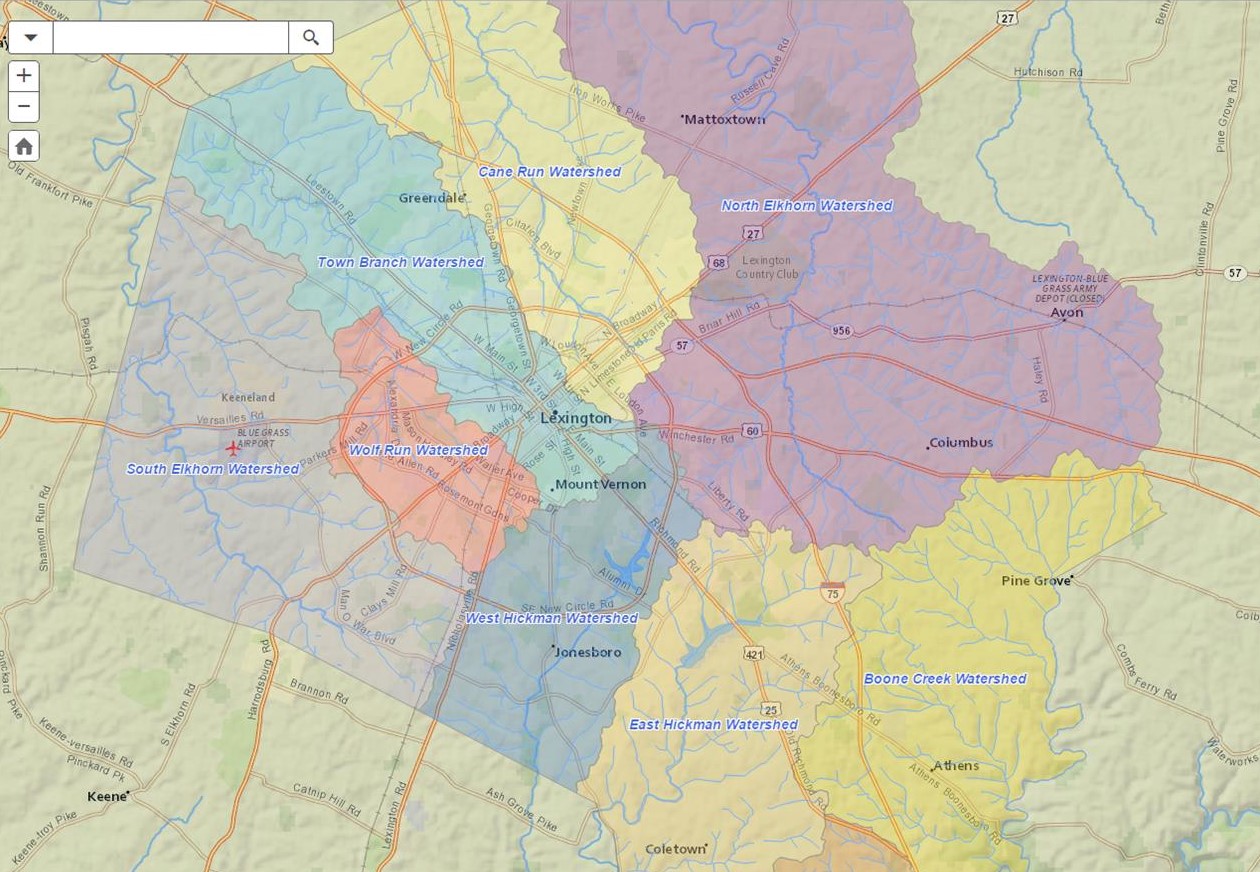The Wolf Run watershed is 10 square miles of southwest Lexington, just inside New Circle Road. More than 13 miles of streams flow through the watershed, which is one of the most developed areas in Lexington. Most of Wolf Run is made up of homes and apartments, along with businesses and schools.
Almost half of Wolf Run is impervious surface, which are hard surfaces that do not absorb water runoff such as roofs, streets, parking lots and sidewalks. This provides challenges for improving stream quality since there is a lot of stormwater runoff that carries pollutants into Wolf Run Creek and its tributaries.
Lexington has a Wolf Run Watershed Plan to improve water quality and reduce stormwater runoff in the watershed.
Health Assessment
Excellent
Wolf Run has high levels of dissolved oxygen in the water, which help support fish and other wildlife. In addition, Wolf Run has low levels of two pollutants that are harmful to fish: suspended solids and phosphorous. Suspended solids are small particles of dirt in the water that can irritate fish gills. Phosphorous can cause algae to grow in streams, which decreases oxygen levels.
Good
More than 20 species of fish have been observed in Wolf Run, which is a great indicator of stream health. The more species of fish that are in a stream, the better the stream quality. The pH of Wolf Run fluctuates due to algal growth during warm weather, but is overall good.
Fair
Wildlife that live in streams need water that is not too acidic or too alkaline. The pH of Wolf Run changes a lot due to algae growing during warm weather, and so the pH of the water ranges from great for wildlife to okay for wildlife.
Poor
Aquatic insects, also called macroinvertebrates, are small bugs that live in water. Mussels, mayflies and crayfish are some aquatic insects you might see if you looked close enough at a healthy stream. Unfortunately, Wolf Run has low levels of aquatic insects. Wolf Run's stream habitat could be improved through "buffer zones" of native plants near streams. This could help filter pollutants like nitrogen from stormwater runoff. Sources of nitrogen in streams includes fertilizer and pet waste.
Wolf Run's streams tend to have high levels of bacteria. While the bacteria in streams is usually harmless, it is possible for some bacteria to cause illness in humans and animals. Lexington's ongoing plan to fix the sanitary sewer system will help improve water quality, but this is not the only source of pollution. Pet waste can also contribute to bacteria in streams.
Conductivity, or dissolved solids, is also high in Wolf Run. Road salt and fertilizers can lead to high conductivity. However, some sources of high conductivity were observed to be natural springs.
Find out the details behind the water quality indicators used in this health assessment.
Watershed Maps
These maps of the Wolf Run Watershed show how water quality varies throughout the watershed.

Do you live outside of the Wolf Run Watershed? Enter your address to find your watershed on Lexington's watershed map.

